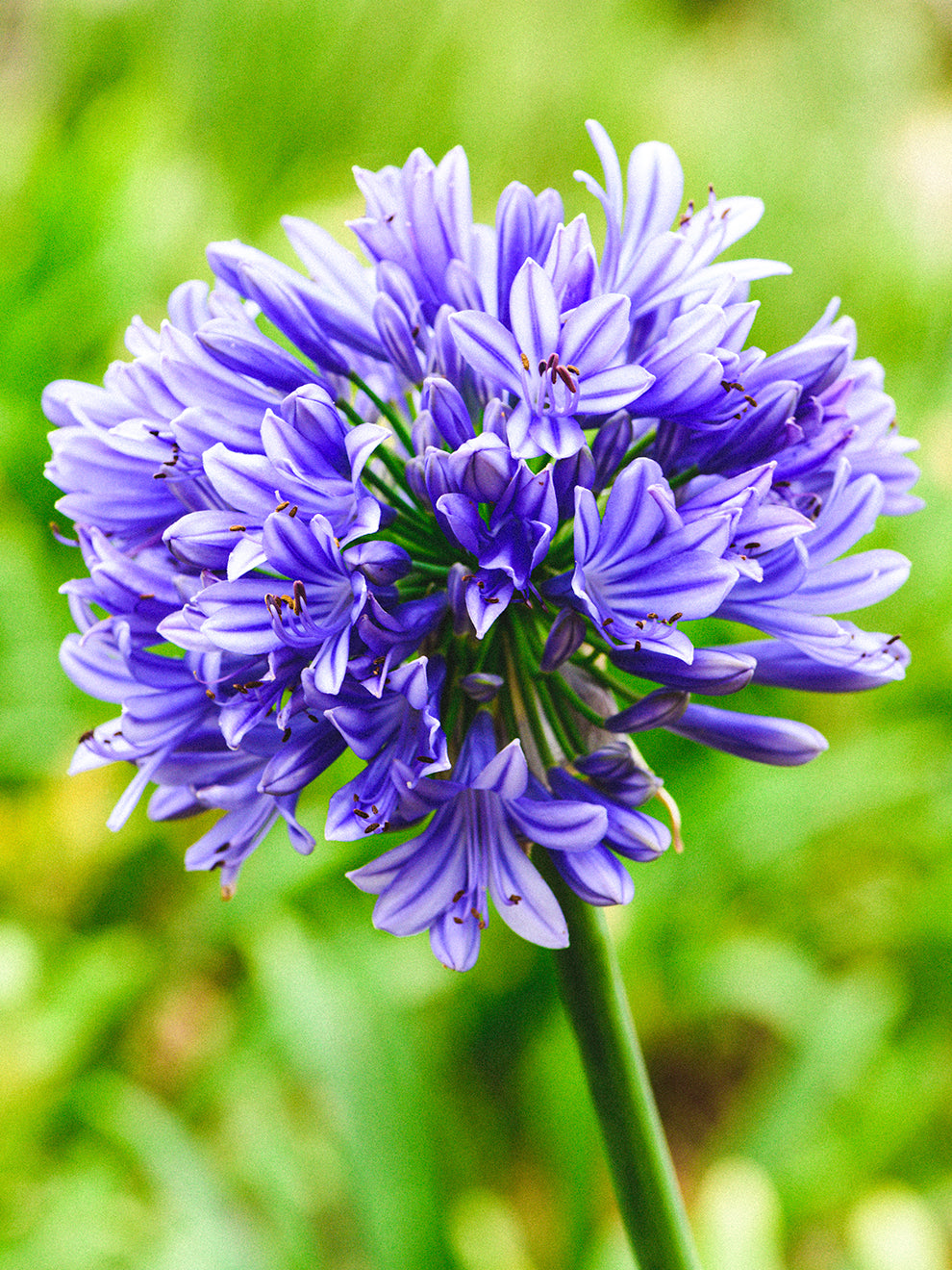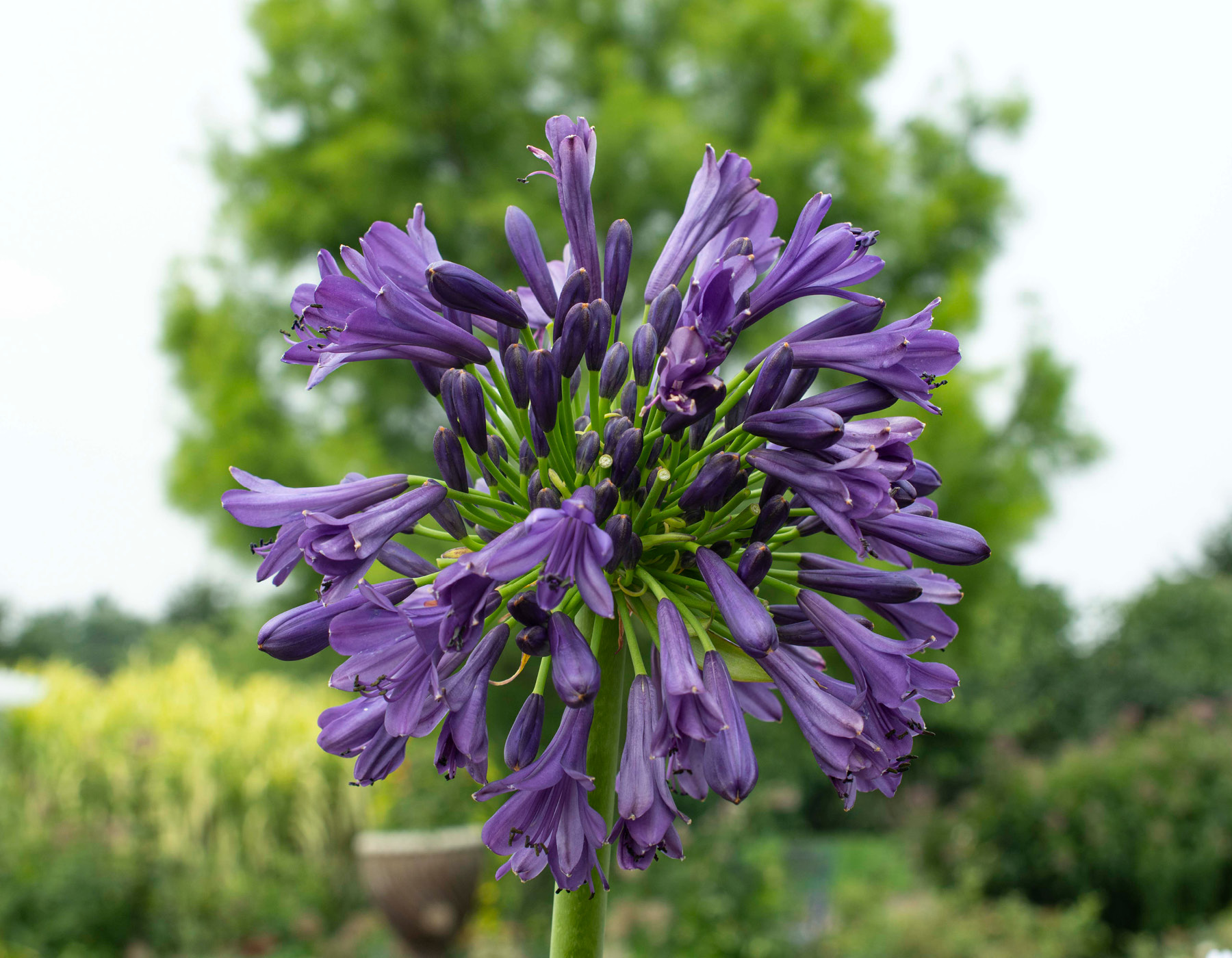Magnificent Agapanthus: Enhancing Your Yard's Elegance
Wiki Article
Grasping the Art of Agapanthus Care: Necessary Steps for Healthy And Balanced Growth and Dynamic Blooms
In the world of gardening, the growing of agapanthus stands as a rewarding undertaking for those that seek to support these stylish flowering plants. From choosing the right range to mastering trimming methods, the journey towards cultivating prospering agapanthus plants is multifaceted and holds the essential to unlocking the full possibility of these herb treasures.
Selecting the Right Agapanthus Selection

When choosing the right Agapanthus variety for your yard, take into consideration factors such as environment viability, blossom shade, and growth habit. In addition, consider the environment in your region to guarantee the Agapanthus range you select can thrive in your details conditions. Recognizing the development habit of different Agapanthus selections is important for appropriate positioning within your yard.
Ideal Growing Problems
Considering the ideal environmental requirements is necessary for successful Agapanthus cultivation. Agapanthus plants are delicate to cold temperatures and ought to be safeguarded from frost throughout wintertime months.To ensure healthy and balanced development and lively blooms, plant Agapanthus light bulbs at a depth of regarding 2-4 inches and space them 8-12 inches apart. Mulching around the base of the plants aids maintain dampness and subdues weed development.
Watering and Fertilizing Tips
Keeping correct moisture degrees and offering vital nutrients are key aspects in the treatment regimen for Agapanthus plants. When it pertains to sprinkling Agapanthus, it is important to strike an equilibrium. If overwatered, these plants choose continually wet dirt however are at risk to root rot. During the expanding season, water deeply once a week, guaranteeing the soil is well-draining to stop waterlogging. In hotter environments or during durations of dry spell, more frequent watering might be required to keep the dirt equally wet. Nonetheless, decrease watering in the winter months to stop water logged conditions.Fertilizing Agapanthus is essential for promoting healthy development and prolific flowers. Apply a balanced plant food, such as a 10-10-10 formula, in the very early spring as brand-new development arises. Repeat this application every 6-8 weeks throughout the expanding season. Stay clear of too much fertilization, as it can cause rich foliage at the cost of blossoms. Constantly follow the maker's directions for proper dilution and application methods. By following these watering and fertilizing tips, you can ensure your Agapanthus plants prosper and generate vibrant, resilient blooms.
Trimming Strategies for Agapanthus
Pruning Agapanthus plants at the appropriate times and with correct strategies is critical for maintaining their health and wellness and advertising ideal growth and blooming. The excellent time to trim Agapanthus is in late winter season or very early springtime before new development emerges.Deadheading spent blossoms can also redirect the plant's power into generating even more blossoms rather than establishing seeds. If you want to gather seeds for propagation, leave some blossoms to Recommended Reading dry and fully grown on the plant.
Bear in mind to use clean, sharp tools to make precise cuts and lower the danger of introducing diseases. Agapanthus. Regular trimming will aid keep your Agapanthus looking healthy and cool while making certain a bountiful screen of lovely blooms
Managing Typical Bugs and Diseases
After ensuring proper pruning techniques for Agapanthus, it is important to resolve common bugs and diseases that can influence the health and vitality of these plants. Agapanthus plants are typically sturdy find yet can still succumb to particular concerns. One usual pest that affects Agapanthus is the Agapanthus gall midge. This tiny, orange fly lays its eggs in the foliage, resulting in distorted growth and flower buds that stop working to open up. To combat this insect, prune and destroy any affected plant parts and consider making use of insecticidal soap.One more typical concern is fungal fallen leave place, which offers as dark lesions on the leaves. To avoid fungal illness, make sure great air blood circulation around the plants, prevent above watering, and remove any type of contaminated leaves quickly. Furthermore, Agapanthus plants can struggle with root site link rot if they are planted in poorly draining soil. To stop this, plant Agapanthus in well-draining dirt and stay clear of overwatering. By being cautious and taking timely action versus illness and pests, you can help your Agapanthus plants thrive and create lively blossoms.

Conclusion
Finally, mastering the art of agapanthus care involves selecting the right variety, offering optimal planting conditions, appropriate watering and fertilizing, suitable pruning techniques, and addressing common parasites and conditions. By adhering to these vital actions, you can make certain healthy development and vibrant blossoms for your agapanthus plants. Remember to frequently keep track of and keep your plants to promote their general wellness and longevity.To make sure healthy growth and vibrant blooms, plant Agapanthus bulbs at a depth of regarding 2-4 inches and space them 8-12 inches apart. By adhering to these watering and fertilizing pointers, you can guarantee your Agapanthus plants thrive and produce vibrant, lasting blooms.
One typical pest that impacts Agapanthus is the Agapanthus gall midget. Additionally, Agapanthus plants can experience from root rot if they are planted in poorly draining pipes soil. By adhering to these essential steps, you can make sure healthy and balanced growth and vibrant blossoms for your agapanthus plants.
Report this wiki page